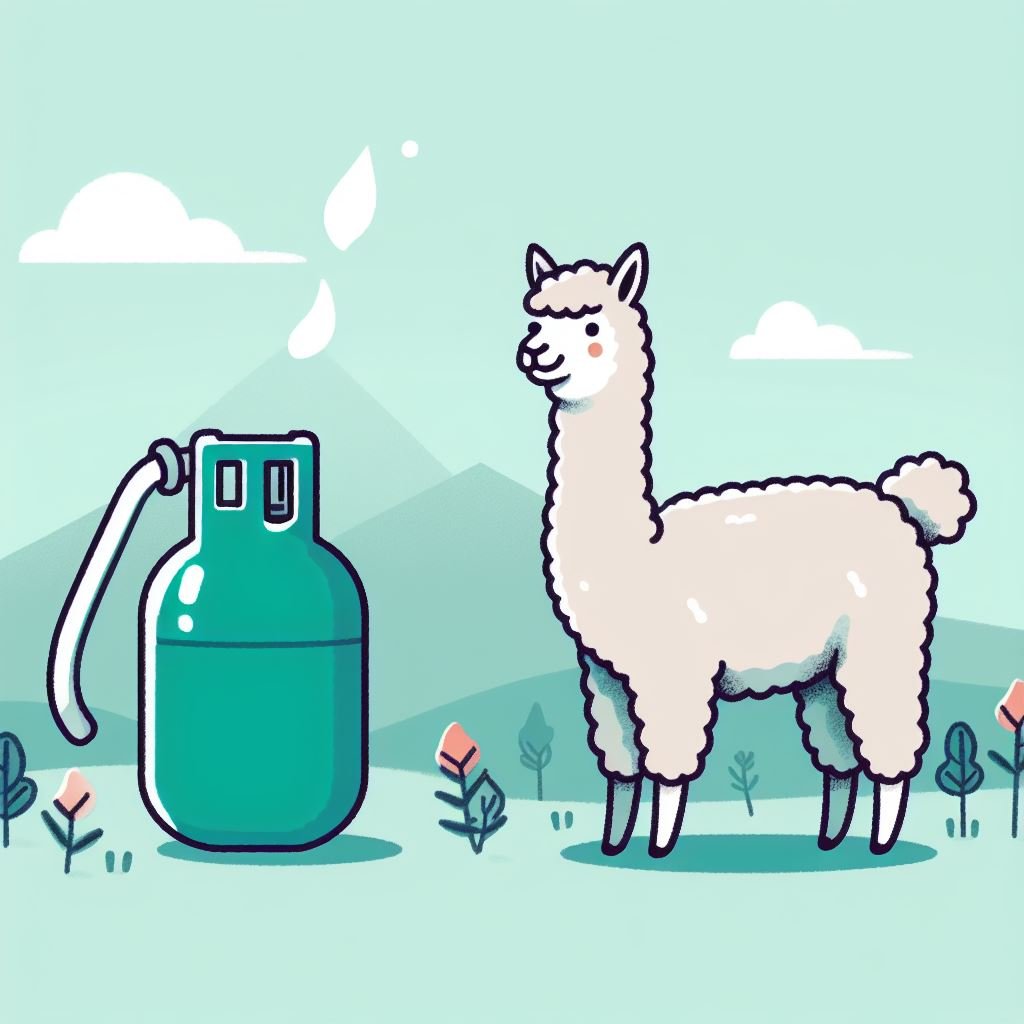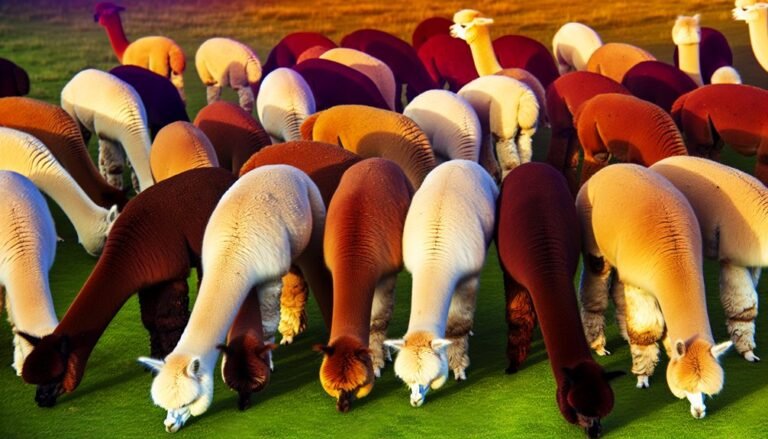Exploring Alpaca Methane Emissions: An Eco-Friendly Livestock Alternative?
Ever wondered about the environmental impact of alpacas? You’re not alone. I’ve spent countless hours researching this fascinating topic. And guess what? Alpacas, like other ruminants, do emit methane. But before you jump to conclusions, let’s delve deeper into the specifics.
Methane emissions from livestock is a hot topic in today’s climate-conscious world. Alpacas, while adorable and beneficial in many ways, are part of this conversation too. It’s important to understand what this means, and how it impacts our environment.
Key Takeaways
- Alpacas, like all ruminants, do contribute to methane emissions which can have significant effects on the environment.
- The methane emissions from alpacas are less in comparison to larger ruminants such as cows due to their efficient digestive system and smaller body size.
- The scale of alpaca farming globally is much lower than that of cattle, goats, and sheep, which results in overall lower methane emissions from alpacas.
- Alpacas typically graze on marginal lands and eat low-quality forages, which reduces land degradation and makes their farming practices generally more sustainable.
- Although alpacas do contribute to methane emissions, their environmental footprint is considerably smaller than larger livestock like cows due to their smaller body size, low food consumption, and distinct grazing habits.
- A comprehensive understanding of the nuances and complexities of livestock’s role within the larger environmental framework is key to managing and potentially reducing methane emissions.
The Environmental Impact of Alpacas
Alpacas, much like their fellow ruminants such as cows and goats, contribute to methane emissions. Methane, a potent greenhouse gas, can have serious implications for our environment. However, when we talk about the impact of alpacas, we need to avoid sweeping generalizations and pay attention to the nuances.

Firstly, it’s pivotal to understand the digestive process of alpacas. Ruminants have a unique four-chambered stomach that helps them ferment food by producing methane. However, research suggests that not all ruminants are equal when it comes to methane production.
Let’s delve into the specifics when it comes to alpacas. Studies have shown that alpacas emit less methane in comparison to larger ruminants like cows.
| Type of Ruminant | Methane Emission (in grams per day) |
|---|---|
| Cow | 200 to 400 |
| Alpaca | 20 to 25 |
The scale of alpaca farming also has a role to play. The alpaca population is dwarfed by the number of cattle, goats, and sheep globally. With fewer alpacas, the total methane emissions are obviously less.
Moreover, how alpacas are raised plays an important role. Typically, alpacas graze on marginal lands, which are less conducive to other forms of agriculture. As they eat low-quality forages, the degradation of good-quality land is avoided. Also, unlike some cattle farming methods, alpaca farming leaves a smaller environmental footprint.
In the broader perspective, it’s crucial to remember that animal agriculture contributes 14.5% of total global greenhouse gas emissions. Thus, we must understand the methane emissions from alpacas in the context of the larger ecosystem – a topic we’ll continue to explore.
Methane Emissions and Livestock
Understanding methane emissions in a broad context, it’s clear that a variety of animals contribute to the problem. Yet, a comparison performed between livestock unveils a few striking facts. Alpacas are not the only methane emitters; other livestock like cows, goats, and sheep contribute too.

Cows are notorious for their methane emissions. According to a report by the Food and Agriculture Organization, cattle farming is responsible for 37% of methane emissions related to human activities. Moreover, they take up valuable agricultural land and require substantial amounts of water, both for drinking and for growing their feed.
On the other hand, goats and sheep, although smaller in size, also contribute to methane emissions. Unlike cows, however, their numbers are often greater. So, what seems minuscule at an individual level can cumulate into a more substantial impact at a global scale.
Now let’s take a closer look at the numbers that shape our understanding of these different livestock and their methane emissions.
| Livestock | Methane emissions per year (kg) |
|---|---|
| Cow | 70-120 |
| Goat | 5-10 |
| Sheep | 8-20 |
| Alpaca | Average of 20 |
As you can see, even though alpacas contribute to methane emissions, their impact is considerably less compared to the larger ruminants like cattle. It’s their efficient digestive system that plays a crucial role here, as it helps lower their individual methane production.
The impact of alpacas becomes even more diluted when we consider the scale of their farming. The number of alpacas globally is much lower compared to that of other livestock mentioned above. This, in combination with their environmentally friendly grazing habits, makes alpacas a sustainable option in terms of land use and methane emissions.
I should note, this doesn’t mean we’ve found the ultimate solution to lowering methane emissions in livestock farming. Instead, it underscores the importance of comprehensive research and understanding the nuances and complexities of this issue. It’s about seeing each type of livestock’s role within the bigger environmental picture.
Alpacas and Methane: The Connection
When we’re examining the link between alpacas and methane emissions, it’s crucial to focus on their unique gut flora. Alpacas, like cows and sheep, are ruminants, and their unique digestive system is perfectly suited to break down hard-to-digest plant fibers.
The process that ruminants use to break down these fibers is called enteric fermentation. During this time-consuming process, microbes in the animal’s rumen ferment the food, breaking it down into gases like carbon dioxide and methane. It’s a naturally occurring process, so if an animal’s diet consists mostly of plant fibers, it’s going to produce methane.

Given their diet and ruminant status, alpacas inevitably produce some methane. But before you raise the alarm, remember that this is not the full picture. The methane emissions of livestock are highly dependent on the specifics of the animal’s diet and weight.
That’s where alpacas bring a twist. Compared to other larger ruminants like cows, alpacas are quite small, hence require less food. This directly influences methane emission. Taking less food means less fermentation, and fewer gases are produced as a result. They can effectively digest food without producing a significant amount of methane.
Alpaca farming also has a lesser impact on land degradation, reducing the overall environmental footprint. They’re typically grazed on marginal lands, bypassing the need to clear fertile lands that could otherwise be used for growing crops. Alpacas, with their petite body size, also require less water than larger livestock, contributing to another environmental saving.
This connection between alpacas and methane emissions must be understood from a comprehensive perspective, paying heed to the different aspects. There’s always more to it, such as the way alpacas are farmed and fed.
Remember, methane emissions are a considerable factor, but they’re not the only part of the environmental puzzle. To truly understand the environmental impact, we need to look beyond methane emissions and consider all aspects of livestock farming.
Understanding the Impact of Alpaca Methane Emissions
While we’ve established the role of size and eating habits influencing the methane emissions of alpacas, it’s important to delve further. The crux of our understanding is that all ruminants, including alpacas, emit methane. But, it’s the discrepancies in emissions that are worth focusing on.
Even though alpacas are indeed methane emitters, their impact is much smaller compared to larger livestock like cows and sheep. Smaller body size, lower food consumption, and marginal grazing habits all aid in reducing the environmental impact that comes from alpacas. The contributing factors are data sufficient to paint a fluid picture, free of any sweeping generalizations.
I find it worth mentioning that methane emissions are a natural part of the digestive process. And, in some environmental areas, key aspects like food consumption patterns and land degradation come to the forefront. These need to be factored in while making comparative eco-impact assessments.
| Methane Impact Factors | Alpacas | Cows |
|---|---|---|
| Body Size | Smaller | Larger |
| Food Consumption | Lesser | More |
| Land Degradation | Lower | Higher |
Alpaca farming’s smaller scale leads to lower land degradation. Their grazing habits typically involve marginal lands. It’s a methodology that does not compete with arable land used for food growth. Arguably, alpaca farming presents less of an ecological challenge.
Furthermore, there is an argument to be made about how farming practices can impact this further. By encouraging better herd management and more sustainable practices, we may be able to cut emissions further. It’s crucial to remember that nothing exists in isolation and we must broaden our understanding by considering the holistic picture – the animal, its habits, and the wider system within which it exists.
As the discussion continues, bear in mind the role ruminants play in methane emissions. The debate is not about removing them from our ecosystem but about better understanding how to manage methane emissions and their impact on the environment. Having a broad understanding of the complexities within this sphere will take us toward a more comprehensive and fair answer.








Our picks
Alpaca & Wool Felted Sole Inserts: Comfy Upgrade?
Best Alpaca Socks for Hiking: Ultimate Comfort and Durability on Trails
Best Alpaca Halter for Comfort and Control